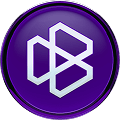


Blast PriceBLAST
BLAST is not available for trading on the Bitget Exchange, but can be held in custody on Bitget Wallet.
BLAST to USD converter
How do you feel about Blast today?
About Blast (BLAST)
What Is Blast?
Blast is an Ethereum Layer 2 solution. It is designed to revolutionize the DeFi experience by offering native yields in ETH and stablecoins. Launched by Pacman, the founder of the NFT marketplace Blur, Blast has garnered significant attention and investment from prominent firms such as Paradigm and Standard Crypto. The platform leverages Ethereum’s Shanghai update to enable auto-rebasing for ETH and introduce a new stablecoin, USDB (Blast USD), which generates T-Bill yields. This unique approach aims to enhance asset value and market efficiency, attracting users and developers to the ecosystem.
Blast provides a 4% yield on ETH and a 5% yield on stablecoins, which is higher than other L2 solutions. By incorporating these yields natively, Blast creates new business models for decentralized applications (Dapps) that aren't possible on other platforms. This strategy not only benefits users by increasing their asset value but also incentivizes developers to build on Blast, fostering a robust and dynamic DeFi ecosystem.
Resources
Official Documents: https://docs.blast.io/about-blast
Official Website: https://blast.io/en
How Does Blast Work?
Blast operates through several key mechanisms that ensure users and developers benefit from its unique yield-generating features. One of the primary components is the auto-rebasing of ETH and USDB. Unlike traditional staking mechanisms, Blast automatically adjusts users’ ETH balances on the platform to reflect yields obtained from L1 staking systems like Lido. This integration ensures that ETH held on Blast appreciates over time without requiring additional user actions, providing a seamless and efficient way to maximize staking rewards.
For stablecoins, Blast introduces a novel T-Bill mechanism. Users can bridge stablecoins like USDC and DAI to the Blast platform, where they are converted to USDB. The yield for USDB comes from MakerDAO’s on-chain T-Bill protocol, offering users a stable and predictable return on their assets. Additionally, Blast employs a gas revenue-sharing model, where Dapp developers receive a share of the gas fees generated by their applications. This revenue can be kept by developers or used to subsidize gas fees for users, enhancing the overall user experience.
Blast also implements a comprehensive points system, rewarding users and developers with Blast Points and Blast Gold. Blast Points are distributed automatically based on the balance of ETH, WETH, and USDB held in users' wallets and smart contracts. Blast Gold, on the other hand, is distributed manually to Dapps based on their traction and integration with Blast-native features. These points can be redeemed for various incentives, further encouraging participation and growth within the Blast ecosystem.
What Is BLAST Token?
BLAST is the upcoming native token of the Blast platform, scheduled for launch in 2024. This token will play a crucial role in the Blast ecosystem, serving as a medium for rewarding users and developers who contribute to the platform's growth. Users can earn BLAST tokens by participating in various activities, such as referring new users, depositing assets, and engaging with Dapps. The reward points accumulated from these activities will be convertible into BLAST tokens during the planned airdrop.
How to Claim Blast Rewards and Airdrop
Claiming Blast rewards and participating in the airdrop is designed to be a seamless and user-friendly experience. To start earning rewards, users must first bridge their ETH or stablecoins (such as USDC or DAI) to the Blast platform. Once the assets are bridged, users will automatically start accumulating Blast Points based on their wallet balances. These points are updated in real-time on the Blast.io Airdrop dashboard. Users can enhance their rewards by inviting friends to join the platform. Each referral earns additional points, and multipliers can be gained by interacting with highlighted Dapps, further boosting the overall rewards. It’s essential to monitor the dashboard regularly to track points and take advantage of any available multipliers.
To participate in the airdrop, users need to ensure that their primary wallet is linked to Blast, typically done through a wallet like Metamask. In addition to accumulating points, users should actively engage in the community by referring others and using Dapps that support the Blast Points API. In May 2024, Blast converted all accumulated points and gold into BLAST tokens, which will be distributed to users’ wallets. Users will be notified through the platform, and the tokens will be directly accessible in their linked wallets. This conversion marks the culmination of Blast’s rewards campaign, turning the accumulated efforts and engagement into tangible assets that can be utilized within the Blast ecosystem or traded on various cryptocurrency exchanges.
AI analysis report on Blast
Live Blast Price Today in USD
Blast Price History (USD)
 Lowest price
Lowest price Highest price
Highest price 
What is the highest price of Blast?
What is the lowest price of Blast?
Blast Price Prediction
What will the price of BLAST be in 2026?
What will the price of BLAST be in 2031?
FAQ
What is the current price of Blast?
What is the 24 hour trading volume of Blast?
What is the all-time high of Blast?
Can I buy Blast on Bitget?
Can I get a steady income from investing in Blast?
Where can I buy Blast with the lowest fee?
Blast news
Blast updates
Today's X Empire Daily Investment Fund for September 26-27, 2024
Blast (BLAST): The Innovative Layer 2 That Introduces Native Yield for ETH and Stablecoins
ZeroLend (ZERO): The Largest Lending Market for Liquid Restaking Tokens
OmniCat (OMNI): Revolutionizing Meme Coins with Omnichain Technology
The Resurgence of NFTs: A Glimpse into the Potential Growth of NFT in 2024
Learn and Earn: Bitget x Haloworld (HALO) Launchpad
Blast Market
Global Blast Prices
- 1
- 2
- 3
- 4
- 5
How to buy Blast(BLAST)

Create Your Free Bitget Account

Verify Your Account

Convert Blast to BLAST
Trade BLAST perpetual futures
After having successfully signed up on Bitget and purchased USDT or BLAST tokens, you can start trading derivatives, including BLAST futures and margin trading to increase your income.
The current price of BLAST is $0.003470, with a 24h price change of +1.17%. Traders can profit by either going long or short onBLAST futures.
Join BLAST copy trading by following elite traders.
Buy more
Where can I buy Blast (BLAST)?
Video section — quick verification, quick trading

BLAST to USD converter
BLAST resources
Blast ratings
Bitget Insights


































.png)













